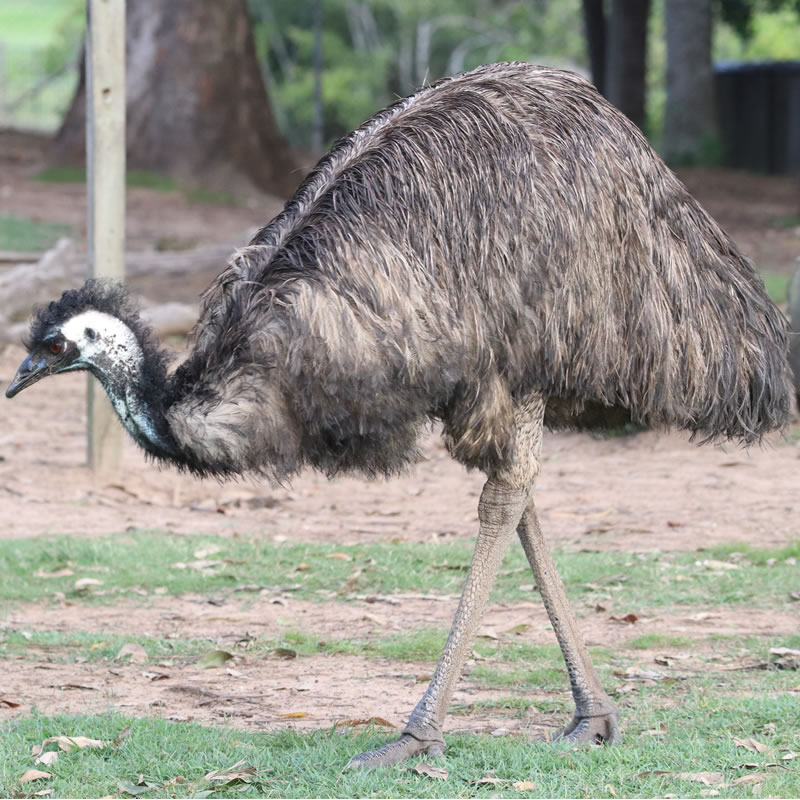
Scientific Name
Dromaius novaehollandiae
Classification
| Kingdom | Animalia |
| Phylum | Chordata |
| Class | Mammalia |
| Order | Struthioniformes |
| Family | Dromaiidae |
| Genus | Dromaius |
| Species | novaehollandiae |
IUCN Redlist Status

Location
Emus can be found in many parts of mainland Australia.
Habitat
They live in different biomes throughout Australia, including forests, grassy plains, and desert areas.
Diet
These large birds are omnivorous, meaning they eat both meat and plants. They eat a variety of fruits, insects, flowers and seeds.
Size
Emus are the among the largest living birds on Earth, second only to ostriches. They can grow to be over 6 feet in height, and can weigh over 100 pounds.
Description
Emus are probably not considered the most beautiful of all birds. On their heads and necks there are patches where feathers sometimes do not grow, giving them a mangy look. In these featherless patches, they have bluish or tan skin. Their eyes are orange and "buggy". Emus' beaks are pointed and are grey to black in color.
Their feathers are somewhat unique in that two feathers grow from each follicle, adding to their unkempt appearance. Emus are flightless birds so their feathers are not specifically desgined for flight. The feathers generally have a dirty brown appearance.
Emus have two long and stalky legs that they use for movement and travel. Their feet have three toes that are not webbed, and are built for running.
Emus have a different appearance than ostriches. Ostriches have light tan-colored feathers on their heads and necks, and emus have dark or black-colored feathers on their heads and necks. Ostriches' bodies are covered in dark brown or black feathers, and emus have dirty brown feathers on their bodies.
Adaptations
Perhaps the best adaptation of emus is their ability to live and survive in a variety of habitats. The number of food sources available to them are higher, as they are able to move from one habitat to another.
Reproduction
Female emus lay an average of 8 - 12 dark-green eggs in a nest built on the ground made of twigs, dirt, vegetation and other materials. After the eggs are laid, females will leave the nest. Males will stay with the nest to incubate the eggs for approximately 2 months until the eggs hatch.
Other Facts
There are few natural predators of adult emus living in Australia. Predators are more likely to eat their eggs or chicks.
Emus have a long history with the tradition, people and culture of Australia. They are featured in numerous mythological stories of the Aboriginal people.
Emus are very inquisitive and curious creatures. In certain circumstances they may approach people to investigate them. It is important to remember that as wild animals emus may be dangerous and should not be approached in the wild.
